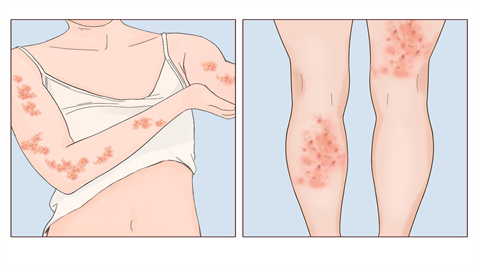How to manage postherpetic neuralgia after shingles
Generally, the treatment methods for postherpetic neuralgia (the aftereffect of herpes zoster) mainly include routine care, physical therapy, medication, traditional Chinese medicine (TCM), and nerve block therapy. Specific details are as follows:
1. Routine Care
During pain episodes, avoid stimulating the painful area. Wear loose and soft clothing to minimize friction that may worsen pain. Maintain a regular daily routine and avoid excessive fatigue. Increase intake of foods rich in vitamin B complex such as lean meat and nuts, which help nourish nerves and alleviate discomfort.
2. Physical Therapy
Gentle physical methods can reduce nerve sensitivity. Commonly used techniques include low-frequency pulsed electrical stimulation and ultrashort wave therapy. Low-frequency electrical stimulation helps stimulate local nerves and block the transmission of pain signals. Ultrashort wave therapy improves local blood circulation, reduces nerve inflammation, and relieves pain symptoms.

3. Medication
Medications should be used under medical supervision. Commonly prescribed drugs include gabapentin capsules, pregabalin capsules, and mecobalamin tablets. Gabapentin and pregabalin regulate nerve excitability and reduce pain perception, while mecobalamin nourishes damaged nerves and promotes nerve repair.
4. Traditional Chinese Medicine (TCM)
According to TCM, this condition is related to stagnation of qi and blood and blocked meridians. Treatment focuses on promoting blood circulation, removing blood stasis, unblocking meridians, and relieving pain. Commonly used herbal medicines include Xuefu Zhuyu Capsules and Danshen Dropping Pills. Acupuncture targets specific points related to the painful area to unblock meridians, regulate qi and blood flow, and help relieve pain and local discomfort.
5. Nerve Block Therapy
For persistent or refractory pain, nerve conduction can be interrupted by injecting medications, commonly performed as local nerve block. A mixture of local anesthetics and anti-inflammatory drugs is injected around the affected nerve, directly acting on the damaged nerve to rapidly relieve pain and improve the patient's quality of life.
In addition, patients should follow medical advice strictly during treatment, attend regular follow-up visits, and avoid adjusting medications on their own. If pain worsens or spreads, they should seek medical attention promptly to adjust the treatment plan. Maintaining a positive mindset is also important, as anxiety may intensify pain perception.





